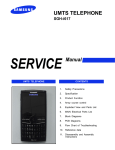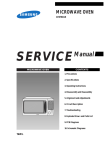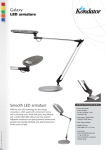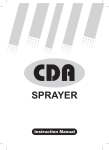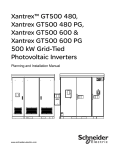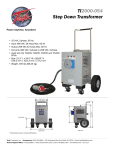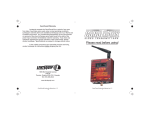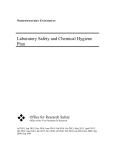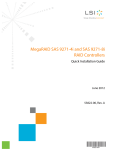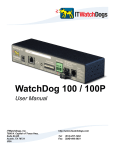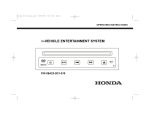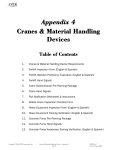Download Strong Enterprises FOLLOW SPOTLIGHT 48057 User's Manual
Transcript
XENON TROUPER Follow Spotlight Type 48057 Issue 4/98 PRELIMINARY STRONG INTERNATIONAL a division of Ballantyne of Omaha, Inc. 4350 McKinley Street Omaha, Nebraska 68112 USA Tel 402/453-4444 • Fax 402/453-7238 PREFACE THE STRONG XENON TROUPER, Type 48057, is a direct current follow spotlight complete with a xenon lamphouse, power supply, optical system, base and yoke assembly, and color boomerang. It utilizes proven design features of the Strong Xenon Super Trouper combined with advanced properties of the Strong Super Trouper II. Using a 700 watt xenon bulb as a light source, the Xenon Trouper meets or exceeds all professional requirements for short- to medium-throw follow spotlight applications. ONLY THE SPECIAL XENON POWER SUPPLIES manufactured by Strong International can be used with the xenon spotlight. For installation and operation of the power supply, see the manual furnished separately. THE XENON LAMPHOUSE utilizes a deep ellipse dichroic (“cold”) coated metal reflector designed to operate in a fixed position with a horizontally mounted xenon bulb as the light source. The dichroic reflector coating reduces heat at the aperture and optical system. BULB ADAPTERS, required to mount the 700 watt bulb into the lamphouse, are included in the spotlight accessory kit. Two anode adapters are supplied; the 65259 adapter, measuring 2-5/8 inches in length, is used with the Hanovia XH0700HS bulb, and the shorter 65199 adapter is used with the OSRAM XBO700W/HS OFR bulb. ADJUSTMENT CONTROL for positioning the xenon bulb is located at the rear of the lamphouse. The adjustments are for the horizontal and vertical positioning, and focus control, of the bulb. THE LAMPHOUSE INSTRUMENT PANEL is equipped with an ammeter and running time meter. The ammeter indicates the operating current of the lamp, and the running time meter records the number of hours the lamp has operated. THE BULB is ignited and extinguished by use of the LAMP switch mounted on the instrument panel. A DC Pulse Igniter Assembly requires no AC control circuit; it operates from DC open circuit voltage normally generated by the xenon power supply. Remote ignition switching is accommodated by wiring a dry contact across wires 3 & 6. See the Interconnection Wiring Diagram. THE LAMP BLOWER, internally wired in the lamp, operates on 115 V.AC and is required to keep the seals on the bulb at a safe operating temperature. This blower will operate continuously until power is turned off at the main line switch to the xenon power supply. THE LAMPHOUSE is supplied with a 13 foot cable containing the two DC leads, the ground lead, and all AC control leads. The cable terminates in a multiple pin MS connector to mate to the receptacle on the power supply. WHEN TRANSPORTING the spotlight, it is recommended that the xenon bulb be removed and placed in its original shipping carton with the cover on the bulb to insure against breakage. XTR/001 LAMPHOUSE - POWER SUPPLY Interconnection Diagram LAMPHOUSE (Connections Pre-wired) MS CONNECTOR Pin Wire No, A DCB DC+ C 2 D 3 E 4 F 5 G 6 I 7 J 8 M Grnd Remote - Auto Sustained 5 Amp. Dry Contact (by Installer) Lamphouse Cable Assembly Conduit XENON POWER SUPPLY SYSTEM MUST BE GROUNDED All wiring must conform to local codes; shield lamphouse cable in conduit if required. Grn XTR/002 MS Connector (pre-wired) DC+ DCGround Lug (as req’d. for older units) INSTALLATION & SET-UP THE XENON TROUPER is shipped in sections which must be assembled. The Folding Base Stand Assembly 65838 is shipped collapsed, and requires only unfolding and securing the (4) base legs using the T-bolts supplied. WHEN INSTALLED in a permanent location, the leveling feet must be removed, and the clearance holes in the base leg brackets used for hardware (user supplied) to bolt the base to the floor or platform. If it is desired to have the unit portable, when operating, the leveling feet must be adjusted down until the weight of the spotlight has been shifted from the casters to the leveling feet. THE INNER TUBE and support yoke has three holes to permit adjusting the height of the spotlight. The three holes are on four inch centers and will allow an optical height of approximately 53 inches, 57 inches, and 61 inches above floor level to the optical center of the lamphouse and lens system. The leveling feet may be adjusted through an additional two inch range. Insert the height location pin through the hole in the outer tube and one of the holes in the inner tube. THE HORIZONTAL SWING and vertical tilt locking knobs are on the right hand (operating) side of the yoke assembly. Tighten both of these locking devices securely before attempting to place the lamphouse and lens system on the support yoke. PLACE THE LAMPHOUSE and lens system on the yoke assembly, with the spot size control handle to the right hand (operating) side, the same as the locking controls on the yoke. Line up the four mounting holes in the bottom of the base rail with the four mating holes in the support yoke and secure with the four 5/16-18 wing screws. ATTACH THE COLOR BOOMERANG to the front of the optical system cover by inserting the hinge pin through the hinge on the boomerang and optical system. Fasten the boomerang yoke to the slotted angle bracket on the underside of the optical system pan. Adjust and securely tighten the wing nut and lock nuts to hold the boomerang parallel with the front of the optical system housing. ATTACH THE LAMPHOUSE CABLE CONNECTOR to the receptacle on the power supply. Align the pins before tightening the locking ring. Do not energize the xenon power supply before first installing the xenon bulb into the lamphouse. EARLIER MODELS of Strong xenon spotlights included a heavy-gauge green ground wire in the lamphouse cable assembly. This ground wire was attached to a ground stud connected to the power supply cabinet. Current models of Strong power supplies include a 1/4-20 stud in the cabinet adjacent to the MS connector to allow ground termination of older spotlights. SAFETY PROCEDURES READ CAREFULLY BEFORE INSTALLING XENON BULB THE XENON BULB is highly pressurized. When ignited, the normal operating temperature of the bulb increases the pressure to a level at which the bulb may explode if not handled in strict accordance to the manufacturer’s operating instructions. THE BULB is stable at room temperature, but may still explode if dropped or otherwise mishandled. Breakage resulting from transport and handling is not covered by the bulb manufacturer’s warrranty, and it is strongly recommended to dismaount the xenon bulb when transporting the spotlight. REFER bulb replacement and service to QUALIFIED PERSONNEL with adequate protective clothing (face shield, clean cotton gloves, welder’s jacket). For routine lamphouse service, observe the following rules: 1. Allow the bulb to cool to room temperature before opening the lamphouse. Put on protective clothing described above. 2. De-energize the xenon power supply at the AC source before opening the lamphouse compartment. 3. When possible, encase the bulb in its protective cover when cleaning or servicing the lamphouse interior. The bulb, when outside the lamphouse, must be encased in the cover. 4. Clean the bulb after it has cooled to room temperature. Do not touch the quartz envelope of the bulb; fingerprints will burn in and create hot spots which may shorten bulb life. If fingermarks are made, they should be carefully removed with methyl alcohol and cotton prior to bulb operation. 5. Never view an ignited bulb directly. BLINDNESS OR PERMANENT EYE DAMAGE MAY BE INCURRED. 6. Use only xenon bulbs designated as OZONE FREE. When possible, vent the lamphouse exhaust to outside atmosphere. 7. Maintain the lamphouse blower in good operating condition. Keep the blower inlet clean for unrestricted air flow. 8. To insure maximum bulb life, operate the lamphouse blower and the exhaust system for at least ten minutes after extinguishing the bulb. 9. If returning a bulb for warranty adjustment, pack it in its original shipping container. Complete and return all required warranty information. XG2/005 10. Dispose of expired bulbs that are beyond warranty in the following manner: Wrap the bulb tightly in several layers of canvas or heavy cloth. Place it on a hard surface and shatter the envelope with a sharp hammer blow. DO NOT place an unshattered bulb in an ordinary refuse container. 11. DO NOT PERMIT UNAUTHORIZED PERSONNEL TO PERFORM OR ATTEMPT ANY PHASE OF XENON BULB HANDLING OR SERVICE. Anode End Cap Envelope Anode Pin Seal Cathode End Cap Seal Cathode Anode Cathode Pin 700 WATT XENON BULB INSTALLATION Type 48057 Trouper CAUTION: OBSERVE ALL SAFETY PROCEDURES. Put on the protective face mask. Wear clean cotton gloves to prevent marking the quartz envelope of the bulb with fingerprints. REMOVE THE TOP COVER of the lamphouse by removing the four Holt head (tamperproof) screws with the special screwdriver provided. Loosen the two knurled-head thumb screws (65152) on the front bulb support yoke and pivot the retaining plate (65151) aside. Slide the 65131 clamp on the end of the igniter lead over the brass socket of the rear bulb support collet (65844). ASSEMBLE THE ADAPTERS to the 700 watt bulb prior to inserting the bulb into the lamphouse. Be very careful not to apply any strain on the quartz envelope when installing adapters. Screw the cathode adapter (65198) onto the threaded negative stud so it seats firmly against the shoulder of the (-) end cap. Slip the 65259 anode adapter over the positive pin up to the shoulder of the (+) end cap. Tighten the set screw (00720) securely to insure a good electrical connection. Thumb Screw 65152 Set Screw 00720 Hanovia XH0700HS Retainer Plate 65151 Anode Clamp 65131 Anode Adapter 65259* Clamping Screw 01532 Cathode Adapter 65198 Rear Bulb Support Collet 65960 * Use short adapter (65199) with OSRAM bulb Front Bulb Support 65117 REMOVE THE PLASTIC PROTECTIVE COVER from the xenon bulb only if necessary. Insert the bulb through the top of the lamphouse, between the reflector support and the front casting. Pass the anode (+) end of the bulb through the hole in the reflector, taking care not to touch the surface of the reflector. INSERT THE ANODE ADAPTER STEM into the rear support collet. The stem must be inserted as far as possible to permit full focus travel of the bulb. Place the cathode adapter into the 65117 front bulb support, pivot the retaining plate to its closed position, and tighten the (2) thumb screws. Tighten the socket head clamping screw in the anode contact securely to insure a good electrical contact. INSTALL THE CATHODE LEAD CONTACT over the end of the cathode adapter up to the shoulder of the contact and tighten the clamping screw securely. Lay the lead in front of the air duct to minimize the shadow. A GLASS STRIP HEAT FILTER is supplied to reduce the thermal energy at the optical system and color gels. Insert the heat filter in the bracket provided on the inside of the lamphouse at the front opening. Place the filter in position with the coated surface facing the bulb. The coated surface is indicated by a small XX or other marking. This filter is a narrow strip that covers only the center portion of the beam. To prevent damage to optical system components, do not operate the spotlight with the filter removed or reversed. REMOVE THE PLASTIC COVER from the xenon bulb. Store the protective cover and the original bulb packing in a secure location. The spare anode adapter (65199) is for use with an OSRAM 700 watt bulb (XBO700W/HS OFR) should such a bulb be used as a replacement. SECURE THE LAMPHOUSE COVER with the (4) tamperproof screws using the special screwdriver provided. The cover must be securely in position to actuate the interlock switch and permit lamp ignition. IT IS RECOMMENDED to establish a routine for periodically checking all electrical connections for tightness, particularly those at the bulb. A loose connection in the DC circuit will cause failure of the contacts and leads, and may damage the bulb. OPERATION PLACE THE MODE SWITCH (on units so equipped) in the “MAN.” position and energize the xenon power supply. The lamphouse blower will start and actuate the blower interlock switch to permit bulb ignition. This lamp blower will operate continuously until the xenon power supply is de-energized. PLACE THE LAMP SWITCH in the ON position and the xenon bulb will ignite. Allow a few minutes for the current to stabilize, and read the lamphouse ammeter. The 700 watt xenon bulb must be operated within the current range specified by the bulb manufacturer, normally 36 amperes nominal; maximum current 40 amperes. Refer to the manufacturer’s documents shipped with the bulb for the exact figures. ADJUST THE POWER SUPPLY as instructed in the power supply manual for the correct operating current. New 700 watt bulbs are normally first operated at their nominal current level (36 A.). The current setting must be increased in time to compensate for bulb aging, but do not, at any time, exceed the maximum current rating (40 A.). REMOVE THE REAR COVER PANEL (two pull type knobs) located below the instrument panel. This will expose the bulb position adjustment controls. THE CENTER SECTION of the control is a threaded member that focuses the bulb in relation to the reflector. Turning this adjustment moves the bulb on the horizontal plane, into or out of the reflector. Rotating this section clockwise moves the bulb away from the reflector. The small knurled screw to the left of this section can be tightened to lock the focusing mechanism in place after the bulb alignment procedure has been completed. THE THUMB SCREWS to the left and right of the focusing control lock the horizontal and vertical position of the bulb. These thumb screws are spring-loaded to apply a degree of friction against the lamphouse back casting. TWO METHODS are recommended to align the bulb in order to project the best light to the stage: MOVE THE SPOT SIZE CONTROL HANDLE on the large lens carriage to the forwardmost position to project the smallest spot possible with the iris, choppers, and dimming controls in their full open positions. Project the spot to a wall or similar flat perpendicular surface opposite the spotlight. TURN THE CENTER FOCUS CONTROL counterclockwise until a small black spot is projected on the wall. It may be well to run this adjustment both directions to permit positive identification of the dark spot. LOOSEN THE TWO THUMB SCREWS to the left and right of the focus control just enough to permit manual movement of complete control assembly. Move the control assembly around the two thumb screws and observe the smooth dark shadow of the bulb electrode inside the shaded circle of the reflector center opening. The shadow of the electrode must be centered in the projected opening of the reflector. MOVE THE CONTROL ASSEMBLY around the thumb screws until the dark electrode shadow is as round as possible to project. It may be necessary to again rotate the focus control to define the electrode shadow. AFTER THE ELECTRODE SHADOW is as even around the outside as possible, tighten the two thumb screws to lock this adjustment in place, and rotate the focus control to obtain the brightest light with the best light distribution. Turn the spot focus control knob, located on the front of the lens mechanism, to sharpen the edge of the spot. THE SECOND METHOD of aligning the xenon bulb is to project the spot to the stage, and using the bulb adjustment controls, obtain a “hot spot” in the projected spot. Center this “hot spot” in the projected spot by moving the entire control section around the two thumb screws. Once the “hot spot” is centered in the projected spot, lock the adjustment control in position with the two thumb screws and rotate the focus control to obtain a spot with an even distribution of light. Turn the spot focus control knob at the front of the lens mechanism to sharpen the edge of the spot. THIS ADJUSTMENT should not be disturbed until the xenon bulb is rotated or replaced. At this time it will be necessary to repeat the alignment procedure. REPLACE THE REAR COVER PANEL over the bulb adjustment control mechanism. Secure using the plastic fasteners. BECAUSE OF MANUFACTURING TOLERANCES and normal bulb aging, it may be necessary to operate one lamp at slightly higher or lower current than others to obtain equal light balance between two or more spotlights. These adjustments are made at the xenon power supply. TO EXTINGUISH THE ARC, place the LAMP switch in the OFF position. The blower in the lamphouse will continue running until the xenon power supply is de-energized. Allow the blower to operate and cool the bulb for at least five minutes after extinguishing. HANDLING THE SPOTLIGHT GENERALLY THE BEST POSITION for the operator to stand is near the center of the spotlight, on the right hand side, although the angle of tilt and the size of the porthole may alter the position for the most convenient operation. EACH OPERATOR will, after a few minutes of operation, generally develop his own system and position for operating the unit. THE HORIZONTAL SWING LOCK LEVER and vertical tilt lock lever located on the base assembly can be set to give the desired amount of friction on the spotlight swing to suit the individual operator. THE LENS CARRIAGE FRICTION BRAKE is a nylon drag screw located on the outrider of the large lens carriage, and is preset at the factory for most satisfactory operation. Individual requirements may vary, and the brake can be adjusted to best suit the operator or allow for a severe “down” angle. Remove the color boomerang and lens mechanism housing, loosen the nylon lock nut and adjust the screw on the friction brake to apply the desired tension. Tighten the lock nut and replace the housing and boomerang. REMOTE/AUTO OPERATION TO IGNITE THE SPOTLIGHT from a remote location or an automation controller, the lamphouse must be equipped with the MODE (Auto-Man.) switch. With the MODE switch in the “AUTO” position, and the LAMP switch “ON”, the lamphouse will ignite by means of a dry contact across terminals 3 and 6 at the lamphouse or power supply (See Lamphouse-Power Supply Interconnection Diagram). This type of installation is intended for use only if the spotlight is locked down as a fixed spot without an operator at the unit. EXHAUST SYSTEM INSTALLATION IF THE SPOTLIGHT is installed in a closed booth, it is recommended to vent the lamphouse exhaust to outside atmosphere to remove the heat from the booth. THE EXHAUST STACK of the lamphouse is designed to fit a six inch diameter duct. The exhaust system must be designed and installed is a way to eliminate any possibility of a down draft or of rain dripping into the lamphouse. The exhaust fan must be capable of removing 750 lineal feet (150 cfm) of air per minute at each lamphouse. TO PERMIT MOVEMENT of the follow spotlight, install a section six inch diameter flexible tubing between the lamphouse exhaust stack and the projection booth exhaust system. The two holes in the stack exposed by removing the vent cap can be used to secure the tubing. IF THE INSTALLATION is to be made in a location where it is not possible to install an exhaust system, leave the vent cap mounted to the exhaust stack. THE RADIATION from some xenon bulbs can convert the oxygen in the surrounding air to ozone. In large quantities, ozone can endanger health, but it spontaneously changes back into oxygen in a very short time, especially if it mixes with a large volume of air (as in an auditorium, arena, or outdoors). Most currently manufactured xenon bulbs are classified as ozone free and do not release ozone. OPERATION OF OPTICAL SYSTEM THE IRIS CONTROL is the front lever which projects through the top of the optical system housing. When this lever is to the left (as viewed from the rear of the unit), the largest aperture is provided. Smaller apertures are obtained as the lever is moved to the right. THE SPOT SIZE CONTROL HANDLE is located on the right hand side of the optical system just above the base rail. A variation of spot sizes from full flood to small spot can be obtained by moving the spot size control handle from one extreme to the other. Beam intensity is increased by this optical system when reducing from flood to spot, and maximum intensity is reached when the spot size control handle is in the extreme forward position. THE MAXIMUM FLOOD SPOT is obtained with the iris control lever to the left (away from operating side) for the largest aperture and with the spot size control handle moved as far to the rear as possible. SMALLER SIZED SPOTS are projected as the spot size control handle is moved forward. Most of the spot sizes needed will be produced with the iris in its maximum open position. FOR A “HEAD SPOT,” or any spot smaller than can be obtained with the spot size control handle in its extreme forward position, shift the iris control lever to the right (toward operating side) for a smaller aperture. The iris control lever should always be returned to its extreme left position before the spot size control handle is again moved to obtain larger spots. THE MASKING SHUTTER (chopper) lever is the middle lever projecting through the top of the optical system housing. The masking shutter blades are operated by this lever to shape the projected spot to a rectangle, strip spot, or dousing. THE DISENGAGED POSITION of the masking shutter lever is to the extreme right (toward operating side) and varying degrees of masking to complete cutoff are obtained by moving the lever to the left (away from operating side). THE ANGLE of the masking shutter blades can be adjusted to compensate for the horizontal projection angle. Remove the color boomerang and optical system housing, and loosen the screws holding each of the masking shutter blades enough to allow adjustments. Ignite the bulb and adjust the angle of the bottom blade by tapping with a screwdriver so its projected edge lies parallel to the footlights. Tighten the screw. Operate the masking shutter lever to close the blades. Adjust the upper blade to close in line with the bottom blade and tighten the screw. THE FADEOUT MECHANISM AND DOUSER CONTROL is the rear lever projecting through the top of the optical system cover. This lever controls the intensity of light from complete fadeout when the lever is to the left, to full intensity when the lever is to the right. THE SPOT FOCUSING CONTROL KNOB is located on the operating side of the optical system at the forward end above the base rail. This control is used to adjust the optical system for the length of throw. When making an adjustment, rotate the spot focusing control knob until the sharpest edge is obtained on the projected spot. OPERATION OF COLOR BOOMERANG THE COLOR BOOMERANG is equipped with six color holders and an ultraviolet filter. Additional filter holders can be supplied by an authorized Strong International Dealer. TO OPERATE INDIVIDUAL COLOR FILTERS, lower the desired filter selector lever. A rocker catch located in the color disc housing holds the filter in position. TO RELEASE A COLOR, push the filter release lever or engage another color, thus releasing the previous color automatically. TO REPLACE A FILTER HOLDER, open the hinged top of the color disc housing and lift out the desired filter holder. HIGH TEMPERATURE FILTERS (RoscoLux® or equivalent) cut to nine inch diameter are required, and are secured in the filter holders with paper fasteners. NOTE: WHEN PLACING COLOR FILTERS in the boomerang, the less dense colors (pink, amber) should be placed in the holders toward the rear of the boomerang (toward arc), and those of greater density (red, green) should be placed in the holders toward the front of the boomerang (away from the arc). COLOR TEMPERATURE REDUCTION FILTERS, required for use with television and videotape, are available from theatrical supply dealers. MAINTENANCE THE STRONG XENON TROUPER SPOTLIGHT requires very little maintenance to keep it in good working order. THE REFLECTOR should be cleaned periodically with a soft, clean, lint-free cloth to remove dust from the reflecting surface. If excessively soiled, the reflector may be cleaned with Windex® or an equivalent glass cleaner. DO NOT use abrasive cleaners of any kind. Clean the heat filter glass; replace with the coated surface toward the lamphouse. CHECK ALL ELECTRICAL CONNECTIONS for tightness on a regular basis. Loose connections, particularly in the DC circuit, may cause premature bulb failure and damage lamphouse components. THE XENON BULB should be checked occasionally for the presence of dust or foreign materials. If necessary, clean the quartz envelope of the bulb with alcohol, and wipe dry with a clean, lint-free cloth. Observe all safety procedures when working with the exposed bulb. THE INSIDE OF THE LAMPHOUSE and the blower should be cleaned periodically, depending on the dust conditions at each installation. Keep the blower inlet grille clean to permit free air flow. The blower is permanently lubricated and requires no oil. THE LENS SYSTEM should be kept clean to prevent any light reduction in the projected spot. Tighten the horizontal swing and vertical tilt locking clamps. Remove the boomerang and the optical system cover to reach and clean the back surface of the large lens. Remove the cover casting over the fadeout, chopper, and iris controls to remove the small projection lens which is held in place with a large spring-type retainer ring at the front of the lens barrel. CLEAN THE PROJECTION LENS and large lens with with any cleaner approved for use on coated projection lenses. Replace the projection lens with the end with the FL marking ring toward the iris; secure with the retainer ring. BEFORE TRANSPORTING the spotlight, remove the xenon bulb from the lamphouse. Place the bulb in its plastic cover and original shipping container. LAMPHOUSE WIRING DIAGRAM Xenon Trouper A = BLK DCB = RED DC+ C = BRN #2 D = PINK #3 E = ORN #4 F = BLU #5 G = YEL #6 I = GRY #7 J = BLK #8 M = GRN Gnd Wires 7 & 8 not connected to Trouper MS CONNECTOR PARTS LIST Wiring Diagram Ref, Desig. B1 C1,2 C3 C4A,B C5 DS1 M1 M2 R1 S1 S2 S3 S5 J1 Part No. 62-98002 76132 76133 80177 81947 65891 39195 65142 82167 80168 81275 81276 80168 37990 Description Blower, 115 V.AC, 50/60 Hz. Capacitor, .005 µf, 600 WVDC Capacitor, .01 µf, 400 WVDC Capacitor, 1.0+1.0 µf, 600 WVDC Capacitor, .01 µf, 600 WVDC Xenon Bulb, 700 Watt Elapsed Time Meter, 60 Hz. Elapsed Time Meter, 50 Hz. (Export) Ammeter, 0-150 A. Shunt, 150 A. 50 mV. Top Cover Interlock Switch LAMP Switch, ON-OFF MODE Switch, AUTO-MAN. Side Cover Interlock Switch Fan Cord & Plug Assembly 65503 65935 88318 DC Pulse Igniter Assembly Lamphouse/Power Supply Cable Assembly MS Connector (incl. with 65935) TROUBLE CHART NORMAL OPERATION WHEN THE SWITCH in the main AC supply line to the xenon power supply is in the ON position, and the 30 A. circuit breaker on the switching power supply is ON, the POWER light on the xenon power supply will glow. The lamphouse blower will start. The blower in the power supply, if a older Strong high reactance type (61000, 61001) or current production switching type, will operate. IF THE LAMPHOUSE TOP COVER and access panel are correctly installed, the top and side panel interlock switches will close. At this time, the control circuit to the LAMP switch will be completed. THE MODE SWITCH, located on the lamphouse instrument panel, should be in the “MAN.” (manual) position. This is the normal setting for spotlight opertion, as it allows direct ignition control by the operator. WHEN THE “LAMP” SWITCH is placed in the ON position, the AC control circuit in the lamphouse will energize the power supply contactor circuit and provide DC current to the igniter and bulb. The high DC open circuit voltage generated upon start-up of the power supply will actuate the DC Pulse Igniter. THERE WILL BE a distinctly audible high voltage arc ping at the igniter arc gap and across the bulb electrodes. The bulb should ignite immediately after one or two of these high voltage pulses, and the lamp current will adjust to the output setting of the xenon power supply. Multiple ignition pulses prior to bulb ignition normally indicate a low DC output setting. See xenon power supply manual. A “warm” or aged xenon bulb might also require multiple strikes. TROUBLE SHOOTING IF THE XENON BULB does not ignite, observe the following operational sequences for assistance in locating and isolating the trouble area. WHEN THE FAN(S) and the indicator light on the power supply are on, the AC circuit in the power supply is trouble free up to the terminal block in the power supply. AT THIS TIME, the lamphouse blower should operate. If this does not occur, the trouble is in the cover interlock switch, the access panel interlock switch, the blower motor, a loose connection, or a broken #2 or #4 lead. Check at this time for 115 V.AC Control Voltage at the cover interlock switch (wires 2 & 4), the side access panel (wires 13 & 14), and the blower terminals (9 & 12). The cover interlock switch must be manually actuated to energize the blower. Observe caution when taking voltage readings in a power ON condition. THE VANE on the air flow switch should actuate. With the MODE switch in the “MAN.” position and the LAMP switch in the “ON” position, the running time meter should start and indicate elapsed time. If this meter does not operate, check for continuity at the MODE and LAMP switches. A defective running time meter will not prevent bulb ignition. WITH THE “LAMP” SWITCH in the “ON” position, a distinct high voltage arc ping should be heard at the spark gap in the igniter, and the flash of the xenon bulb should be visible through the ammeter as a high RF voltage pulse is applied across the bulb electrodes. IF THE HIGH VOLTAGE PING or the flash at the ammeter is not apparent, check the “No Load” DC Voltage between the lamphouse and power supply. Check the DC voltage across terminals #10 (-) and #15 (+). A reading of 85-150 V.DC should be measured if using a high reactance power supply; 140-170 V.DC if using a switching type. If this voltage is not indicated, the problem is in the leads between the lamphouse and power supply, or in the power supply boost circuit. See the trouble shooting section of the power supply manual for additional instructions. THE SWITCHING-TYPE xenon power supply normally furnished with the spotlight system contains thermal overload switches and circuits to protect the power supply from high or low AC input voltage. A lack of open circuit voltage, or interruptions in sustaining DC current, may be traced to these circuits. IF THE HIGH VOLTAGE ARC is audible at the lamphouse and the bulb does not flash, check for a lamphouse DC lead arcing to ground. If no ground fault is detected, replace the bulb and attempt ignition with the new bulb. IF THE HIGH VOLTAGE ARC is audible at the lamphouse, the flash of the bulb is visible in the ammeter, but ignition of the bulb is not sustained, the problem area is in the power supply. See the trouble shooting section of the power supply manual for additional instructions. IF THE HIGH VOLTAGE ARC is not audible or the flash of the bulb visible, the problem is in the igniter assembly. EXCHANGE of components (i.e. igniters, power supplies) between similar Strong Xenon Troupers to aid in diagnosis of a problem is encouraged. This will not lead to equipment damage, and will not void equipment warranty. XENON TROUPER TROUBLESHOOTING Bulb fails to ignite. 1. MODE switch S3 set to “AUTO.” Place in “MAN.” position when not employing automated or remote lamphouse operation. 2. AC power not on to lamphouse. Turn switching power supply 30 A. circuit breaker ON. If 115 V.AC not read at 2 & 4, see power supply manual. 3. Top cover or side access panel interlock switch (S1, S5) open. Close and secure lamphouse top cover. Tighten all four mounting screws; check switch actuating screw. Tighten side access panel screws. 4. Faulty interlock switch(s). Check for 115 V.AC at 9 & 12; replace switch(s) if defective. 5. Faulty S2 “ON-OFF” switch. Check for voltage at 3 & 5; check for loose terminals or wiring. Replace if defective. Bulb fails to ignite; ping audible, bulb flash visible. 1. Inadequate DC output from xenon power supply. Set power supply output to correct range required for bulb wattage (65 A. for 1.6 kW, 75 A. for 2 kW). 2. If bulb flash is visible but faint, check for defective glass capacitor 65216 in igniter (capacitor body cracked or leaking oil). Replace if defective. 3. Faulty or expired xenon bulb. Replace as required. Bulb fails to ignite; ping audible, no bulb flash. 1. Faulty xenon bulb. Check for cracked electrodes or darkened envelope. Replace if defective. 2. Ignition pulse shorting to ground. Inspect DC leads for burned insulation; dress leads away from grounded metal components. No high voltage ping audible; MODE switch in “MAN.” and LAMP switch in “ON.” 1. Loss of AC control voltage. Check xenon power supply for tripped circuit breaker or open thermal switch. See power supply manual. 2. Little or no DC “No Load” voltage. Measure DC “No Load” voltage at 10 & 15. See power supply manual. 3. Open fuse F1 (600 V.) on switching power supply. SEE POWER SUPPLY MANUAL. Allow (20) minutes for capacitor discharge before replacing. 4. Faulty igniter. Check for adequate DC “No Load” at 10 & 15. If present, and igniter does not fire, replace igniter. Bulb goes out during operation. 1. Xenon power supply overheated; thermal switch open. Check power supply blower(s), air inlets and outlets unobstructed. See power supply manual. Bulb goes out during operation (continued) 2. Xenon bulb depressurizing. Check for envelope discoloration; replace if defective. 3. Power supply brown-out protection actuated by voltage drop. See power supply manual. 4. Phase loss detected by power supply (3 phase units only). See power supply manual. Power supply does not energize when actuated. 1. S1 or S5 cover interlock switch, S4 air vane switch, S2 power switch, S3 MODE switch. Check for 115 V.AC at each station; replace defective component. SEE POWER SUPPLY TROUBLESHOOTING UNDER SAME HEADING. Noise in theatre sound as bulb ignites. 1. Faulty RF suppression capacitor(s). Remove and test C1, C2, C3, C4A or C4B. Replace if defective. 2. Lamphouse, power supply, or sound system not properly grounded. Connect to adequate earth ground. 3. Leads between lamphouse and automation contact not shielded. Shield leads in conduit. Excessive light flicker. 1. Faulty or aged bulb. Check for cracked or sagging electrodes; replace if defective. 2. Excessive ripple in DC output. See power supply manual. 3. Arc stabilization magnet reversed. NORTH pole should point toward operator side. Check with compass if required. Reduced light output. 1. Normal bulb aging. Increase output current. DO NOT EXCEED MAXIMUM CURRENT SPECIFIED BY BULB MANUFACTURER. 2. Soiled reflector. Clean using commercial glass cleaner. USE NO ABRASIVES. 3. Soiled heat filter, projection lens or large lens. Clean as required. Extremely long duration between ignition pulses. 1. Low DC “No Load” from xenon power supply. Check “No Load” voltage; see power supply manual. 2. Defective spark gap. A “Ping” sound is normal; excessive “Hissing” is abnormal. Replace if defective. 3. Low AC voltage to lamphouse. Check for 115 V.AC at 2 & 4; if below 95 volts, check stepdown or isolation transformer in xenon power supply. See power supply manual. Color gels burning or fading prematurely. 1. Bulb focused to “hot spot.” Refocus bulb to flat field with iris fully open and spot size control handle (“trombone”) fully forward. 2. Heat filter glass reversed or peeled. Check for coated surface toward bulb; replace if coating peeled. 3. Reflector coating peeled. Replace if defective. 15 16 17 18 20 19 21 22 14 13 23 1 2 12 3 11 4 FIGURE 1 9 10 8 7 6 5 PARTS LIST Figure 1 Item 1 2 3 4 5 6 7 8 9 10 11 12 13 14 15 16 17 18 19 20 21 22 23 Part No. 65114 00805 65164 65111 65865 65155 65156 65117 65151 65152A 01567 65115 00262 65171 65175 41-51122 00876 00805 01432 65503 80168 72178 65112 61-98002 65966 65827 65960 21-48027 65131 65134 00182 65160 00255 80168 65185 00254 23756 Description Reflector Bulkhead Casting Tie Rod Lock Nut, 1/4-20 Hex Tie Rod, Bulkhead to Front Casting Lamphouse Front Casting Lamphouse Base Pan & Lower Side Inner Heat Shield, Left Inner Heat Shield, Right (not shown) Front Bulb Support Yoke Retainer Plate Thumb Screw, Retainer Plate (2 req’d.) Mounting Screw, 10-24 x 1/2" Bind Head Air Duct Casting Screw, 8-32 x 1" Fillister Head Insulator Bushing Insulator Plate Screw, 1/4-20 x 3/4" Hex Head Lockwasher, 1/4" Split Ring Hexnut, 1/4-20 Screw, 1/4-20 x 1/2" Socket Head DC Pulse Igniter Assembly Side Cover Interlock Switch (S5) Switch Mounting Bracket Lamphouse Back Casting Blower (B1), 115 V.AC, 50/60 Hz. Igniter Lead & Clamp Assembly Bulb Positioning Assembly (less Collet) Rear Support Collet Collet Retaining Ring Contact Clamp (incl. with Item 17) Barrier Strip, (10) Terminal Screw, 6-32 x 7/16" Fillister Head Barrier Strip Mounting Bracket Screw, 8-32 x 5/16" Fillister Head Top Cover Interlock Switch (S1) Switch Mounting Bracket Screw, 8-32 x 1/4" Fillister Head Flanged Reflector, 10" Dichroic NOT SHOWN 65895 65866 01736-1 65149A Lamphouse Top Cover Assembly Cap, Exhaust Stack Tamperproof Screw, 10-32 x 1/2" Holt Head Screwdriver (for 1736-1) FIGURE 2 PARTS LIST Figure 2 Item 1 2 3 4 5 6 7 8 9 10 11 12 Part No. 65142 81276 81275 65116 65197 37985 15010 65150 65112 65959 65153 65154 76329 65891 65870 00953 01343 01620 01382 65107 Description Ammeter (M2) MODE Switch (S3), AUTO-MAN. LAMP Switch (S2), ON-OFF Casting, Bulb Positioning Control Fender Washer, Inner Thumb Screw Compression Spring Fender Washer. Outer Lamphouse Back Casting Focus Screw & Bearing Focus Lock Screw Nylon Ball, 3/16" Diameter Plug Button, Chromed Elapsed Time Meter (M1), 60 Hz. Elapsed Time Meter, 50 Hz. (Export) Screw, 4-40 x 1/2" Round Head Lockwasher, #4 Hexnut, 4-40 Brass Screw, 8-32 x 3/16" Bind Head Instrument Panel (less Components) FIGURE 3 PARTS LIST Figure 3 Item 1 2 3 4 5 6 7 8 9 10 11 12 13 14 - Part No. 80168 01741 65185 00254 00891A 65876 79131 65960 21-48027 M4361 00377 82167 00385 00875 65935 95119 95120 81947 00381 80177 00375 00885 65966 00685 00876 65131 01532 65951 65134 00182 65160 00255 00891A 65890 00182 Description Top Cover Interlock Switch (S1) Lockwasher, 7/16" Switch Mounting Bracket Screw, 8-32 x 1/4" Fillister Head Lockwasher, #8 Potentiometer (early models*) Ground Terminal Rear Bulb Support Collet Collet Retaining Ring Cable Clamp Screw, 10-24 x 1/4" Fillister Head Shunt (R1) Screw, 10-24 x 1/2" Fillister Head Split Lockwasher, #10 Lamphouse/Power Supply Cable Assembly Bushing, 1-1/4" Lock Nut, 1-1/4" Capacitor (C5) Ground Screw, 10-24 x 5/8" Fillister Head Capacitor (C4A, C4B) Screw, 10-24 x 3/16" Fillister Head Lockwasher, #10 Igniter Lead & Clamp Assembly Screw, 1/4-20 x 3/8" Hex Head Split Lockwasher, 1/4" Contact Clamp (incl. with Item 10) Clamping Screw, 8-32 x 7/8" Socket Head Lamphouse Wire Harness Assembly Barrier Strip, (10) Terminal Screw, 6-32 x 7/16" Fillister Head Barrier Strip Mointing Bracket Screw, 8-32 x 5/16" Fillister Head Lockwasher, #8 Capacitor Assembly (C1, C2, C3) Screw, 6-32 x 7/16" Fillister Head Items 20 & 21 shown offset for clarity. See Figure 5, Items 11-13. Small Lens not shown; see Parts List, Item 23 FIGURE 4 PARTS LIST Figure 4 Item 1 2 3 4 5 6 7 8 9 10 11 12 13 14 15 16 17 18 19 20 21 22 23 - Part No. 51875 51493 51492 00217 00830 00866 51102 51133 51489 00866 01475 41-51170 51168 51167 00490 51114 51992 51509 48410 01752 01754 48899 51162 41-51178 51114 51485 48127 48147 51157 51160 00830 48895 01307 00541 48896 51101 48404 48042 00241 Description Carriage Casting, Large Lens Lens Retaining Ring Rubber Lens Cushion Screw, 8-32 x 5/16" Round Head Flatwasher, #8 Brass Flatwasher, #10 Large Lens Lens Focus Block Lens Focus Shaft Flatwasher, #10 Cotter Pin, 1/16" x 3/8" Set Screw, Focus Knob Focus Knob, Lens Mechanism Post, Focus Ribbon Mounting Screw, 1/4-20 x 1/2" Flat Head Stop Collar Lens Focus Ribbon Handle, Red Plastic Handle Shaft Lock Nut, 1/4-20 Nylon Hex Friction Brake Screw, 1/4-20 x 1" Hex Head Nylon Base Pan, Welded Assembly Tension Spring Set Screw, 10-32 x 1/4" Stop Collar Slide Rod (Left & Right) Truarc Ring, #5100-56 Truarc Ring, #5101-56 Pulley, Focus Ribbon Pulley Stud Flatwasher, #8 Brass Lens Housing Welded Assembly Screw, 10-32 x 3/8" Pan Head Screw, 1/4-20 x 1/2" Pan Head Small Lens Carriage Welded Assembly Small Lens (not shown; mounts to 48896) Small Lens Mounting Plate (not shown; 2 req’d.) Mounting Tube (for Item 24 Lens) Tube Mounting Screw, 8-32 x 5/8" Flat Head PARTS LIST, Figure 4 (continued) Item 24 25 26 - Part No. 44239A 83155 51160 00830 Description Projection Lens Retaining Clip, Projection Lens Pulley Stud Flatwasher, #8 Brass NOT SHOWN 48891 49342 01346 00877 Base Rail, Lamphouse & Lens Mechanism Hand Rail Screw, 5/16-18 x 1/2" Hex Head Split Lockwasher, 5/16" FIGURE 5 PARTS LIST Figure 5 Item 1 2 3 4 5 6 7 8 9 10 11 12 13 14 15 16 17 18 19 20 21 22 23 24 25 26 27 28 29 30 31 32 33 34 35 36 37 38 39 Part No. Description 10048A Knob, Red Plastic 48402 Iris Shaft 00179 Screw, 6-32 x 1/4" Fillister Head 00892 Lockwasher, #6 51978 Friction Spring & Pad (for 51979) 00184 Screw, 6-32 x 5/8" Fillister Head 00892 Lockwasher, #6 51979 Iris (as shown; also see Figure 5A) See Figure 5A for current configuration 51226 Stud, Chopper Blade 51871 Aperture Support Plate, Welded Assembly 51160 Pulley Stud 51157 Small Pulley 00830 Flatwasher, #8 Brass 47191 Chopper Blade 47191 Chopper Blade 47982 Slide Assembly, Chopper Blade 00253 Screw, 8-32 x 3/16" Fillister Head 00891A Lockwasher, #8 00853 Washer, 1/4" Steel, S.A.E. 51156 Friction Plate 51602 Pull Rod, Lower Fadeout Blade 00876 Split Lockwasher, 1/4" 00805 Hexnut, 1/4-20 51517 Spacer 00866 Flatwasher, #10 00400 Screw, 10-32 x 1-1/2" Fillister Head 00831 Flatwasher, #10; .036" Thick 01344 Lockwasher, #10 00378 Screw, 10-32 x 1/4" Fillister Head 51443 Pivot Shaft Retainer 51226 Stud, Chopper Blade 48898 Fadeout Mechanism Bracket, Welded Assembly 48878 Lower Fadeout Blade 48879 Upper Fadeout Blade 51153 Pivot Bushing 51515 Pull Rod, Upper Fadeout Blade 00919 Cotter Pin, 1/16" x 1/2" 51520 Fadeout Control Handle Bracket 51452 Handle, Fadeout Control 01406 Nut, 5-16-18 FlexLock Hex PARTS LIST, Figure 5 (continued) Item 40 41 42 43 44 45 46 47 48 49 50 51 52 53 Part No. 00853 51156 51498 51155 10048A 00254 00891 47170 48406 51153 00876 00805 01406 51497 Description Washer, 1/4" Steel, S.A.E. Friction Plate Chopper Pull Rod, Short Handle, Chopper Control Knob, Red Plastic Screw, 8-32 x 1/4" Fillister Head Lockwasher, #8 Iris Stop Bracket Bracket, Chopper Control Handle Pivot Bushing Split Lockwasher, 1/4" Hexnut, 1/4-20 Locknut, 5/16-18 Chopper Pull Rod, Long FIGURE 5A Part No. 01306 21-70029 24369 24372 24374 25034 25035 41-51252 41-50325 41-51530 48402 Description Screw, 6-32 x 5/16" Spring Washer Bell Crank Adapter Ring Iris Iris Clamp Link with Pins Screw, 8-32 x 5/8" Screw, 6-32 x 3/8" Shoulder Bolt Iris Control Handle 48402 01306 24369 24374 21-70029 41-51530 41-51325 25035 41-51252 25034 24372 51850 BOOMERANG ASSEMBLY BOOMERANG PARTS LIST Part No. 51850 00180 00255 00793 00829 00831 00837 00839 00856 00886 01309 01310 01406 01419 01456 01515 01566 01573 45209 49226* 51166 51192 51196 51347* 51376 51396 51398 51399 51406 51522 51526 51527 51530 51535 51591 51842 51845 51848 51928 51932 51933 51934 90473 91199 Description Boomerang Assembly Screw, 6-32 x 5/16" Fillister Head Screw, 8-32 x 5/16" Fillister Head Nut, 6-32, Steel Washer, #8 Brass, 3/8" O.D. Washer, #10 Brass, 7/16" O.D. Washer, 5/16" Brass, 3/4" O.D. Washer, 3/8" Brass, 7/8" O.D. Washer, 1/2" S.A.E. Lockwasher, #8 Split Ring Order 41-35065 Wing Nut 1/2-13 Hex Half Nut, 1/2-13 Locknut, 5/16-18 x 1/4" Screw, 5/16-18 x 3/4" Hex Head Cap Paper Fastener Screw, 4-40 x 1/4" Round Head Screw, 10-24 x 5/16" Pan Head Jam Nut, 1/4-20 “E” Ring, 3/16" Adjusting Screw (Replace with 51347*) Shoulder Screw Ultra Violet Filter Hinge Pin Adjusting Screw (Mfr. 1991 and Later) Cover Plate, Color Frame Catch Nylon Spacer Washer Spacer Clip, U.V. Filter Frame, Color Disc Housing Shaft, Rocker Catch Pivot Shaft, Color Disc Pivot Yoke Screw, U.V. Filter Pivot Latch, Color Disc Housing U.V. Filter Support Frame Assembly Rocker Catch Assembly Housing, Welded Assembly Color Frame Slide Channel Assembly Arm Assembly (5-3/16") Arm Assembly (4-11/16") Arm Assembly (4-3/16") Spring “E” Ring, 5/16" 1 2 3 33 4 5 32 31 6 30 7 8 9 29 28 27 26 25 24 23 10 11 12 13 22 14 21 17 19 16 20 18 15 FOLDING BASE & STAND Assembly No. 65838 PARTS LIST Folding Base & Stand Item 1 2 3 4 5 6 7 8 9 10 11 12 13 14 15 16 17 18 19 20 21 22 23 24 25 26 27 28 29 30 31 32 33 Part No. 49120 02411 49121 41-35020 00845 49126 49125 49124 49129 49130 10048A 49179 49114 10048A 83742 49208 00854 41-51397 41-70007 41-35056 83745 83744 49226 00919 48395 65824 48399 83381 00687 01304 48394 65431 01317 65823 00689 83341 48884 Description Tilt Axis Bolt Washer, 1.25" O.D. x .640" I.D. Washer, Tilt Axis Hexnut, 3/8-16 Flatwasher, 3/8" S.A.E. Clamping Plate Clamping Spring, Compression Clamp Bushing Shaft, Tilt Clamp Handle, Clamp Shaft Knob, Red Plastic Swivel Clamping Nut Handle Stud, Swivel Clamp Knob, Red Plastic Base Column, Welded Assembly Swivel Caster Flatwasher, 3/8" S.A.E. Screw, 7/16-14 x 3" Hex Head Flatwasher, 7/16" Nut, 7/16-14 FlexLock Leg T-Bolt, Welded Assembly Base Leg, Welded Assembly Leveling Foot Lock Nut, 1/2-13 Hex Height Adjust Pin, 3/8" Diameter Inner Tube & Ring Welded Assembly Bronze Washer Collar, Swivel Clamp Screw, 1/4-20 x 1/2" Hex Head Screw, 8-32 x 5/16" Pan Head Yoke Cover Plate Inner Tube Retaining Collar Screw, 1/2-13 x 2-1/2" Hex Head Yoke, Welded Assembly Screw, 1/4-20 x 5/8" Hex Head Cable Clamp Saddle & Quadrant Plate, Welded Assembly ASSEMBLIES 65838 18765 Base & Stand, Complete (Items 1-33) Folding Base Assembly (Items 14-20)












































